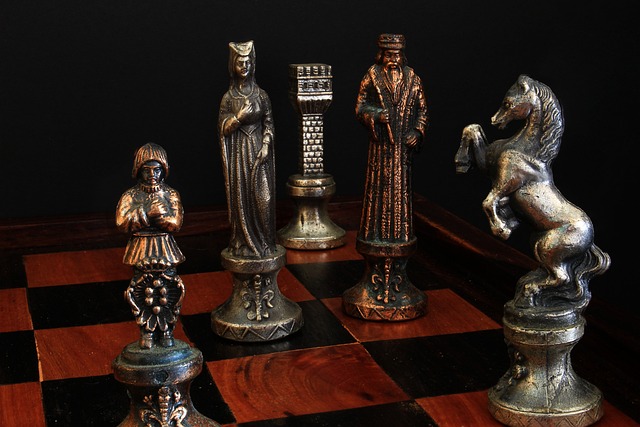Welcome to the world of chess! Whether you’re a complete beginner or have some basic knowledge of the game, understanding the fundamental chess moves is crucial to your growth as a player.
In this article, we will explore the essential chess moves that every beginner should know. By the end, you’ll be equipped with the knowledge to navigate the chessboard with confidence and start building your chess skills.
How do the pawns move in chess?
Pawns are the backbone of your army, the foot soldiers that hold the front line. Their movement may seem simple, but it carries immense strategic significance. Pawns are unique in that they can only move forward, one square at a time. This incremental progress allows them to gradually advance and stake claim to crucial positions on the board.
However, on their initial move, pawns have an interesting option. Instead of moving one square, they can make a bold leap forward, advancing two squares. This opening maneuver, known as a double-step, can be a powerful tool for gaining early control of the center of the board. By occupying the central squares, pawns create a strong foundation for launching attacks and dictating the flow of the game.
When it comes to capturing, pawns have a slightly different approach. While their regular movement is forward, pawns capture pieces diagonally. If an opponent’s piece is situated on a diagonal square directly in front of a pawn, the pawn can execute a capture by moving diagonally and removing the opposing piece from the board. This diagonal capture adds an extra layer of complexity to pawn movements, requiring careful consideration of potential captures and their implications.
What are the rules for moving the knight?

The Knight is an intriguing piece with a unique movement pattern. It moves in an L-shape, consisting of two squares in one direction and then one square in a perpendicular direction.
Knights are the only pieces that can “jump” over other pieces on the board. They can be particularly useful for initiating attacks, forking pieces, or defending key squares.
How can I move the bishop on the chessboard?
Bishops are long-range pieces that excel in diagonal movement. They can move any number of squares diagonally as long as the path is unobstructed.
Each player starts with two bishops, one on a light square and the other on a dark square. Utilize their diagonal power to control important diagonals, launch attacks, or support your pieces.
What are the basic moves of the rook?

The rook is a powerful piece that moves horizontally or vertically across the board. It can move any number of squares in a straight line, as long as no pieces are blocking its path.
Rooks are most effective when placed on open files or ranks, allowing them to control the board and support other pieces.
How does the queen move and capture?
The queen is the most powerful piece on the chessboard. It combines the movement abilities of both the rook and the bishop, allowing it to move any number of squares horizontally, vertically, or diagonally.
The queen’s versatility makes it a potent attacker, defender, and strategic asset. Use her wisely to dominate the board and create winning opportunities.
Comparison of Chess Pieces: Movement and Strengths
| Piece | Movement | Strengths |
|---|---|---|
| Queen | Any number of squares in any direction | Versatile, powerful, can control the board |
| Rook | Any number of squares horizontally or vertically | Strong in open files, can control ranks |
| Bishop | Any number of squares diagonally | Excellent in open diagonals |
| Knight | Moves in an L-shape, jumping over pieces | Tricky, can jump over other pieces |
| Pawn | Moves forward, captures diagonally | Can promote, important for pawn structure |
Key Points About the Queen’s Power and Versatility in Chess:
- The queen is the most powerful and versatile piece on the chessboard.
- The queen can move any number of squares in any direction: horizontally, vertically, or diagonally.
- Its versatility allows the queen to influence multiple areas of the board simultaneously.
- The queen is a dominant force in both offensive and defensive maneuvers.
- It can spearhead attacks, infiltrate deep into enemy territory, and restrict opponents’ movements.
- Defensively, the queen can protect important squares and establish a solid defensive perimeter.
- The queen excels in tactical combinations and can contribute to devastating checkmate scenarios.
- Other powerful pieces include the rook, bishop, knight, and pawn, each with its own unique movement patterns and strengths.
What is the special move of the king?
The king is the most important piece in chess, and its safety should be a top priority. The king moves one square in any direction – horizontally, vertically, or diagonally. However, the king has a special move called castling.
Castling allows the king to move two squares toward a rook on its initial square, while the rook moves to the square adjacent to the king. This move serves to protect the king and develop the rook simultaneously.
How do I perform a castle move?
Castle move is a crucial maneuver in chess. It is performed by moving the king two squares towards a rook on its original square and then placing the rook on the square next to the king.
The casting move allows the king to find safety by positioning himself behind a wall of pawns and connecting the rooks. It is a valuable move for both king safety and activating the rook.
Can pawns capture other pieces?

Yes, pawns can capture other pieces. Pawns capture diagonally, moving one square forward and one square to the side. For example, if an opponent’s piece is one square diagonally in front of your pawn, you can capture it by moving your pawn diagonally.
Are there any limitations on the knight’s movement?
While the knight can jump over other pieces, it does have certain limitations. It must always move in an L-shape, consisting of two squares in one direction and then one square in a perpendicular direction.
Additionally, the knight cannot move in a straight line like the rook or the queen.
What are the restrictions on the bishop’s diagonal movement?
Bishops have a unique movement pattern limited to diagonals. However, their movement is restricted by the presence of other pieces on the board.
A bishop can only move along a diagonal if the path is clear and no obstacles are blocking its way. This limitation requires careful positioning and planning to maximize the bishop’s potential.
Can the rook move across the entire board?
Yes, the rook has the ability to move across the entire board, horizontally or vertically. However, it is essential to note that the rook can only move in a straight line and cannot jump over other pieces.
This characteristic emphasizes the importance of open files and ranks for the rook’s effectiveness.
What is the power and versatility of the queen’s movement?
The queen is the crown jewel of the chessboard, possessing unparalleled power and versatility. Its movement capabilities are truly exceptional. The queen can traverse any number of squares in a straight line, be it horizontally, vertically, or diagonally. This remarkable freedom of movement grants the queen the ability to influence multiple areas of the board simultaneously.
The queen’s range and versatility make it a formidable force on the chessboard. It can swiftly maneuver from one side of the board to the other, dominating the battlefield with its commanding presence. The queen’s ability to move in any direction enables it to execute a wide range of strategic and tactical ideas, making it a crucial piece in both offensive and defensive maneuvers.
In an offensive role, the queen can spearhead attacks, coordinating with other pieces to mount a relentless assault on the opponent’s position. Its long-range mobility allows it to infiltrate deep into enemy territory, putting pressure on key squares and pieces. The queen’s presence alone can force opponents into defensive positions, restricting their freedom of movement and limiting their options
How can I protect the king from threats?
Protecting the king is crucial for survival in chess. Ensure that your king has a haven by casting early in the game.
Position your pieces strategically to defend the king, and avoid exposing it to unnecessary risks. Always be mindful of your opponent’s threats and anticipate potential dangers to keep your king secure.
What is the significance of pawn promotion?
When a pawn reaches the opposite end of the board, a moment of excitement and opportunity arises. This pivotal point in the game presents a chance to transform a humble pawn into a mighty force. Known as pawn promotion, this rule allows you to exchange your pawn for any other piece on the board, except the king.
The significance of pawn promotion cannot be overstated. It grants you the ability to replace a low-value pawn with a more powerful and versatile piece, often the queen. The queen is the most valuable and influential piece on the chessboard, capable of moving in any direction and dominating the game. Promoting a pawn to a queen can dramatically shift the balance of power in your favor and open up new avenues for strategic maneuvers.
However, the decision of which piece to promote your pawn should not be taken lightly. It requires careful consideration of the current state of the game and your overall strategy. Depending on the situation, promoting your pawn to a different piece may prove more advantageous. For example, promoting to a knight can introduce a highly mobile and unpredictable piece, while promoting to a rook can strengthen your control over open files and ranks.
How can I improve my overall understanding of chess moves?
To enhance your understanding of chess moves, practice regularly and study various resources, such as books, online tutorials, and video lessons. Play games against opponents of different skill levels and analyze your moves to identify areas for improvement.
Engage in chess puzzles and tactics training to sharpen your tactical vision. Continuous learning and practice will help you develop a strong foundation and improve your overall chess skills.
All things considered,
We’ve explored the fundamental chess moves that lay the foundation for beginners. From the strategic advancement of pawns to the intricate patterns of knights, bishops, rooks, queens, and kings, each piece offers a unique contribution to the game.
By understanding their movement capabilities, restrictions, and special rules like castling and pawn promotion, beginners can develop a solid understanding of the chessboard. To thrive in the world of chess, it’s essential to protect the king, visualize winning combinations, and continuously improve through practice and study. So, grab a chessboard, challenge opponents, and embark on your exciting chess journey!




